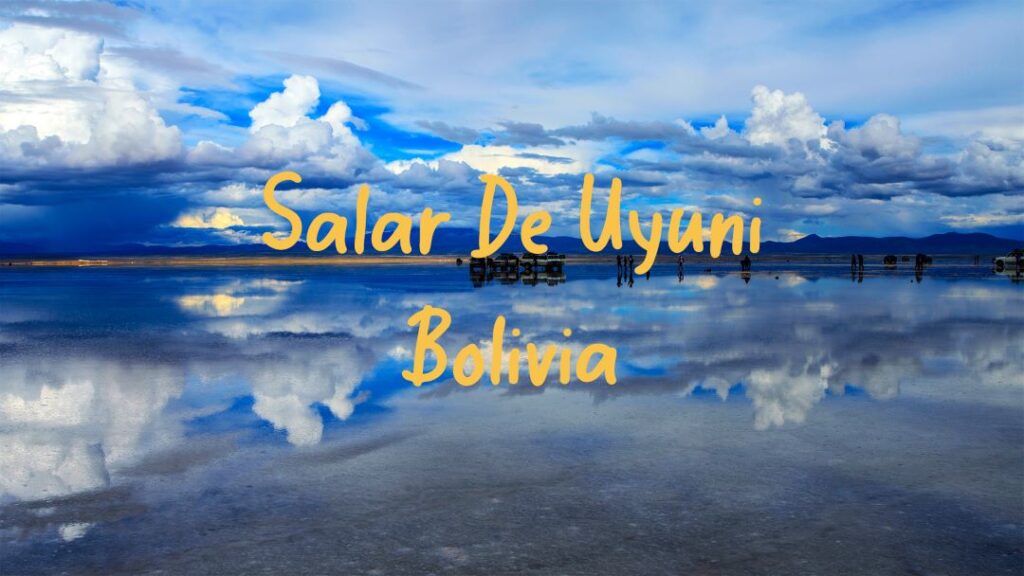Salar de Uyuni, located in Bolivia, is the largest salt flat in the world, spanning over 10,000 square kilometers. Situated in the southwest region of the country, near the crest of the Andes, it sits at an altitude of about 3,656 meters (11,995 feet). This vast expanse of salt is a result of prehistoric lakes that evaporated thousands of years ago, leaving behind a thick crust of salt and minerals. When dry, it looks like a never-ending white desert, but during the rainy season, it transforms into a giant mirror, reflecting the sky in a breathtaking display.
The beauty of Salar de Uyuni attracts thousands of tourists every year. It is famous for its unique landscape, which feels otherworldly. The salt flat is so flat that it has been used for satellite calibration and as a reference point for measuring altitudes. Visitors often take creative photographs here, using the vast, flat background to create optical illusions.
Besides being a stunning location, Salar de Uyuni is also rich in lithium, a valuable resource used in batteries. The area is home to flamingos, cacti, and other wildlife adapted to the harsh environment. Tourists usually explore the salt flat on guided tours, which can last from one to three days. These tours often include visits to nearby attractions like the Tunupa Volcano, colorful lagoons, and bizarre rock formations.
Whether you visit during the dry season to walk on the salt crust or the rainy season to witness the reflective surface, Salar de Uyuni offers an unforgettable experience. It is truly one of the most remarkable natural wonders in the world and a must-visit for any traveler looking to explore Bolivia’s unique landscapes.
How to Spend Time in Salar De Uyuni?
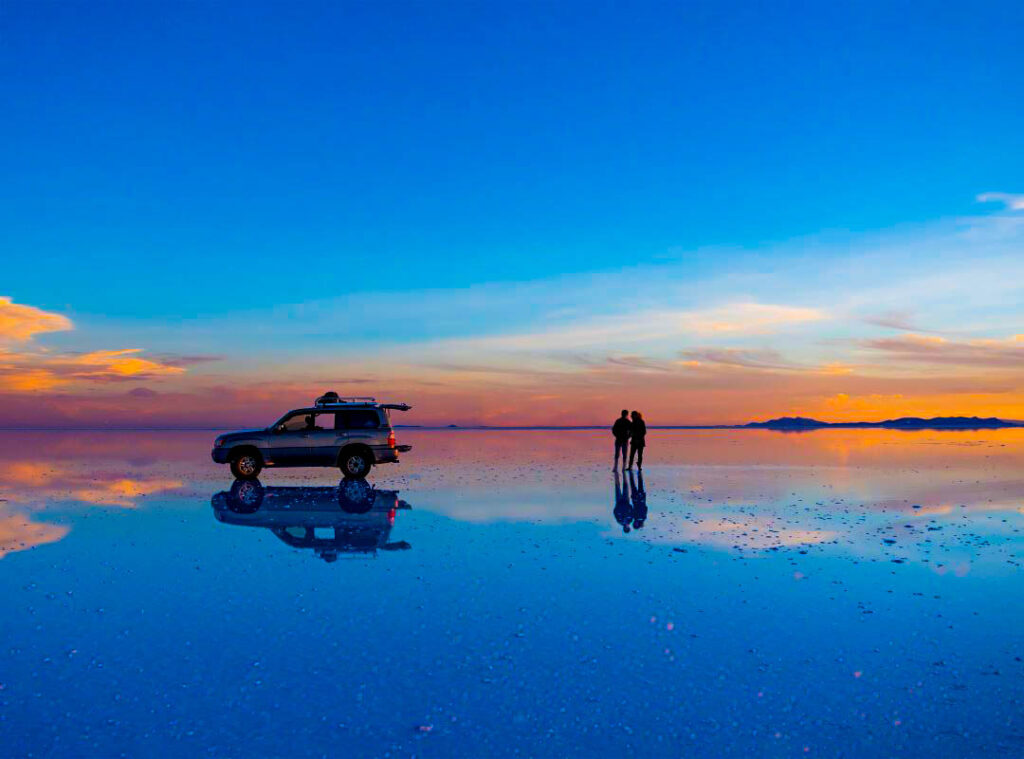
Spending time in Salar de Uyuni can be an unforgettable experience filled with unique activities. One of the most popular things to do is take a guided tour of the salt flats. These tours typically last from one to three days, depending on how much of the area you want to explore. During the tour, you can visit the breathtaking salt desert, where you can take creative photos that play with perspective. This is a perfect opportunity to capture fun and surreal images, as the endless white background can make objects appear larger or smaller than they really are.
Additionally, visiting nearby attractions like the Tunupa Volcano is a must. This dormant volcano offers stunning views of the salt flats from above. Many tours also include stops at colorful lagoons, such as the Red Lagoon (Laguna Colorada), where you can spot flamingos. Visiting the train cemetery near Uyuni is another interesting experience. It’s a place where old trains were abandoned after the decline of the mining industry, and it has a haunting, yet fascinating atmosphere.
Stargazing is also an incredible way to spend your time at Salar de Uyuni. The clear skies and high altitude make it an ideal location for viewing the night sky, with stars shining brightly in the vast expanse of the desert. Whether you’re interested in photography, nature, or simply relaxing and taking in the views, there’s no shortage of ways to enjoy your time in Salar de Uyuni.
Why Is Salar De Uyuni So Famous?
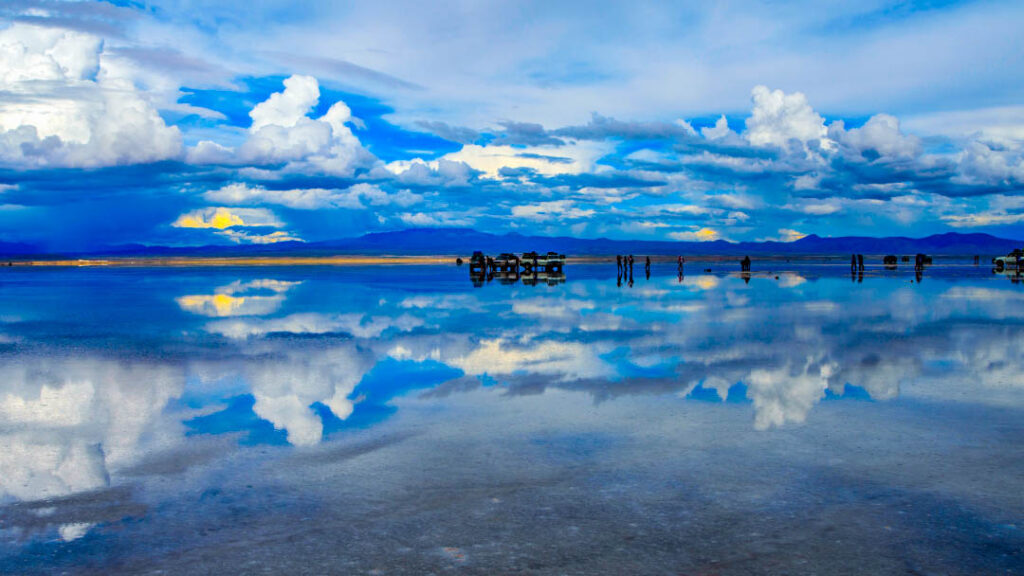
Salar de Uyuni is famous for being the largest salt flat in the world, covering more than 10,000 square kilometers. It’s not just its size that makes it special, though. The salt flat offers an otherworldly experience due to its stunning, endless white surface. When it rains, the thin layer of water turns the flat into a giant mirror, perfectly reflecting the sky. This creates the illusion of walking in the clouds, making it a dream destination for photographers and travelers alike.
Another reason for its fame is its incredible flatness. Salar de Uyuni is so flat that it has been used for calibrating satellite measurements. The unique landscape allows for some of the most creative photography in the world, as there are no natural points of reference, making it easy to play with perspective. People from all over the world come to take pictures that defy the senses.
Furthermore, Salar de Uyuni is rich in lithium, which is used in batteries for electronic devices. This makes it an important location for the mining industry. The area’s unique combination of natural beauty, scientific significance, and economic importance has contributed to its global fame.
How Many Days Do You Need in Salar De Uyuni?
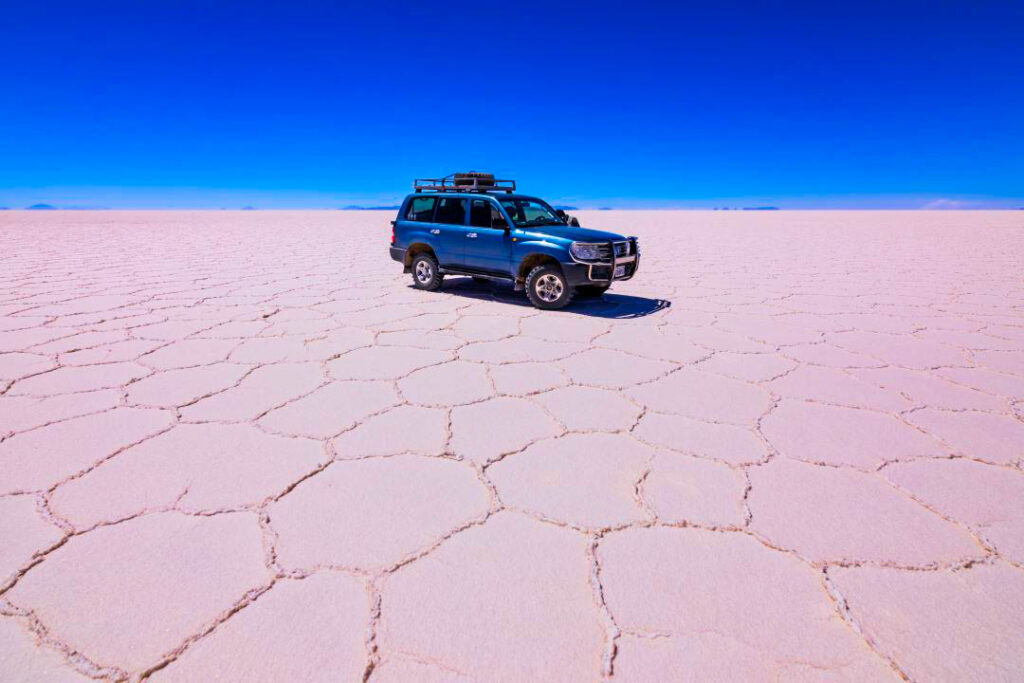
The ideal length of stay in Salar de Uyuni depends on how deeply you want to explore the area. For a basic experience, a one-day tour can give you a good introduction to the salt flats, allowing you to take photos, see the highlights, and experience the surreal landscape. However, to fully appreciate the beauty and diversity of the region, a two or three-day tour is recommended.
On a multi-day tour, you can explore more remote areas, such as the Tunupa Volcano, nearby lagoons with colorful mineral deposits, and unique rock formations. These longer tours often include visits to local villages, hot springs, and the famous train cemetery near the town of Uyuni. Additionally, spending more time in the area allows you to witness both the sunrise and sunset over the salt flats, which are spectacular events.
For those who are interested in stargazing or photography, an extra day or two can be incredibly rewarding. The night skies in Salar de Uyuni are exceptionally clear, making it a perfect spot for capturing the Milky Way or simply enjoying the stars. Overall, while you can experience the salt flats in one day, spending two to three days will provide a more in-depth and memorable adventure.
Why Is Salar De Uyuni the Most Livable Salt Flat?
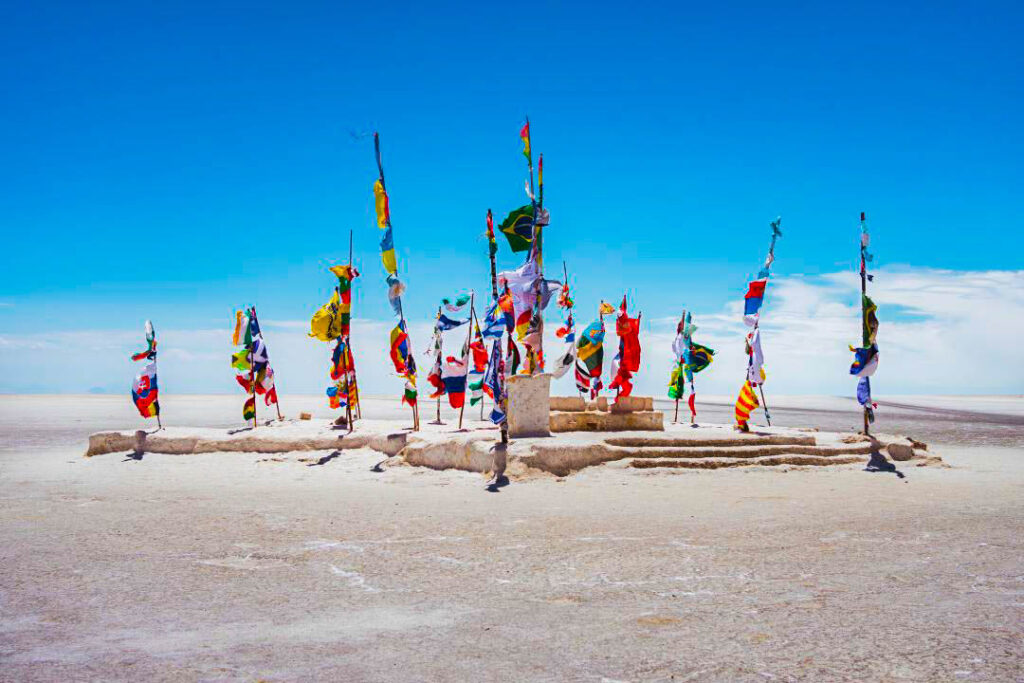
Salar de Uyuni is often considered one of the most livable salt flats due to its accessibility, natural beauty, and the variety of experiences it offers. Unlike other salt flats around the world, Salar de Uyuni is a major tourist destination with established infrastructure that makes visiting easier and more comfortable. The nearby town of Uyuni serves as a gateway to the salt flats, offering accommodations, guided tours, and amenities for travelers.
In terms of natural beauty, Salar de Uyuni is unmatched. Its vast, flat surface creates stunning visual effects, especially during the rainy season when it becomes a mirror reflecting the sky. This makes it one of the most picturesque places on Earth. Additionally, the area is surrounded by other natural wonders, such as volcanoes, hot springs, and colorful lagoons, which add to its livability and attraction.
The salt flat is also home to unique wildlife, such as flamingos, which thrive in the nearby lagoons. These natural elements, combined with the fascinating geological history of the region, make Salar de Uyuni a place that feels alive despite its harsh environment. For tourists, it’s not just a place to visit briefly, but a destination where you can immerse yourself in nature and culture for several days, making it a truly livable salt flat.
Why You Must Visit Salar De Uyuni?
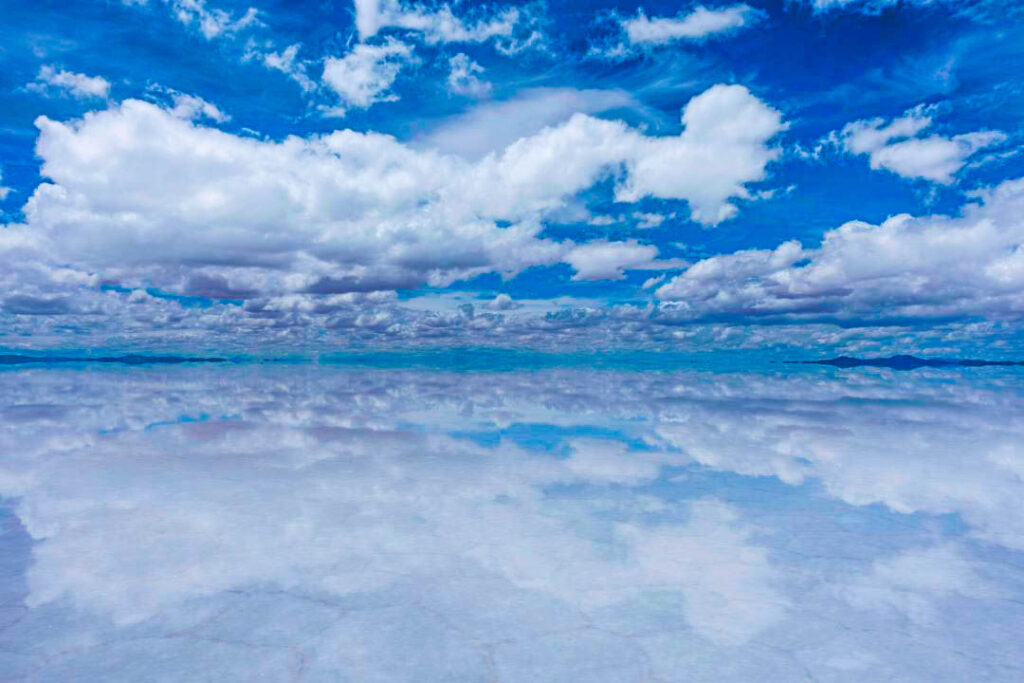
Visiting Salar de Uyuni is a must for anyone looking to experience one of the most unique and surreal landscapes on Earth. This vast salt flat offers an otherworldly experience, with its endless white expanse stretching out to the horizon. Whether you visit during the dry season, when the salt forms a solid crust, or during the rainy season, when the flat becomes a giant mirror reflecting the sky, the views are breathtaking.
Salar de Uyuni is not just about the salt flat itself; it’s also a gateway to other incredible natural wonders. Nearby, you can explore the colorful lagoons, active and dormant volcanoes, and bizarre rock formations that dot the landscape. The region is rich in wildlife, particularly flamingos, which can be seen wading in the shallow waters of the lagoons.
For photographers, Salar de Uyuni is a dream destination. The unique flatness of the area allows for creative photo opportunities that play with perspective and scale. Even if you’re not a professional photographer, the landscape is so beautiful that it’s hard to take a bad picture. The opportunity to capture these surreal images, combined with the peaceful, otherworldly atmosphere of the salt flat, makes a visit to Salar de Uyuni an unforgettable experience.
Where is Salar De Uyuni Located?
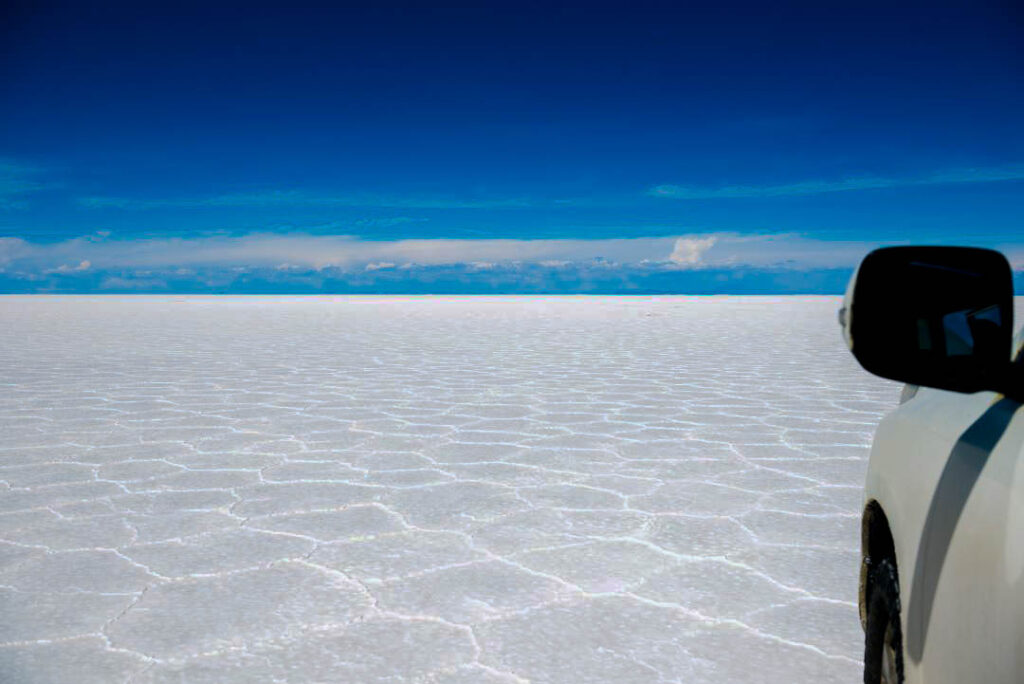
Salar de Uyuni is located in the southwestern part of Bolivia, near the crest of the Andes Mountains. It lies at an altitude of approximately 3,656 meters (11,995 feet) above sea level, in the Potosí and Oruro departments. The nearest town is Uyuni, which serves as the main gateway to the salt flats. The region is relatively remote, but Uyuni can be reached by bus, train, or plane from major Bolivian cities like La Paz and Sucre.
The salt flat is part of the Altiplano, a high plateau that spans parts of Bolivia, Peru, Chile, and Argentina. This area was once covered by prehistoric lakes, which evaporated over thousands of years, leaving behind a thick crust of salt and other minerals. Today, Salar de Uyuni is the largest of these salt flats, covering an area of more than 10,000 square kilometers.
The location of Salar de Uyuni makes it a key part of Bolivia’s natural and cultural landscape. It’s not just a popular tourist destination but also an important resource for the country, as it contains large reserves of lithium, a valuable mineral used in batteries. Its remote yet accessible location adds to its allure, offering travelers a sense of adventure while still being reachable from Bolivia’s main cities.
When is the Best Time to Go to the Salar de Uyuni?
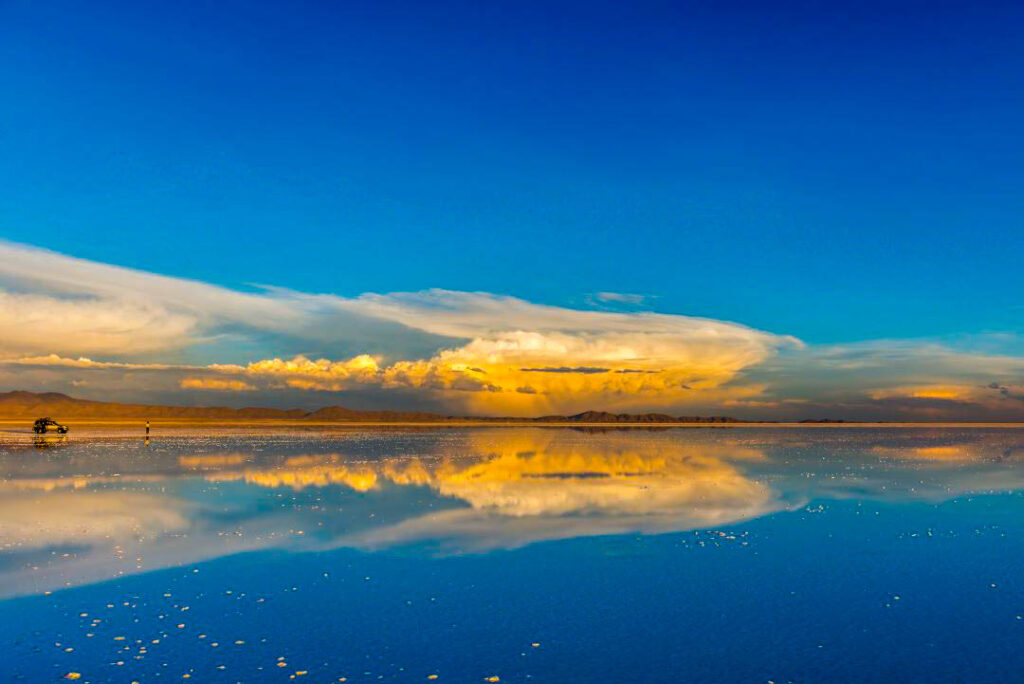
The best time to visit Salar de Uyuni depends on what you want to experience. The dry season, from May to October, is ideal if you want to walk on the salt flats and see the hexagonal patterns formed by the salt. During this time, the salt
crust is solid, making it easier to explore by vehicle or on foot. The dry season is also the best time for seeing the surreal landscape against clear blue skies.
On the other hand, if you want to witness the famous mirror effect, when the salt flat turns into a giant reflective surface, the rainy season (November to March) is the time to visit. During this period, rainwater creates a thin layer over the salt flat, reflecting the sky and creating an illusion of walking in the clouds. This is a magical experience, but it can also make travel around the flats more challenging due to the water covering the surface.
Ultimately, the best time to visit depends on your preferences. Both the dry and rainy seasons offer unique and stunning experiences, so whether you prefer the reflective mirror or the solid salt landscape, Salar de Uyuni is beautiful year-round.
What Can I Do in Salar De Uyuni?
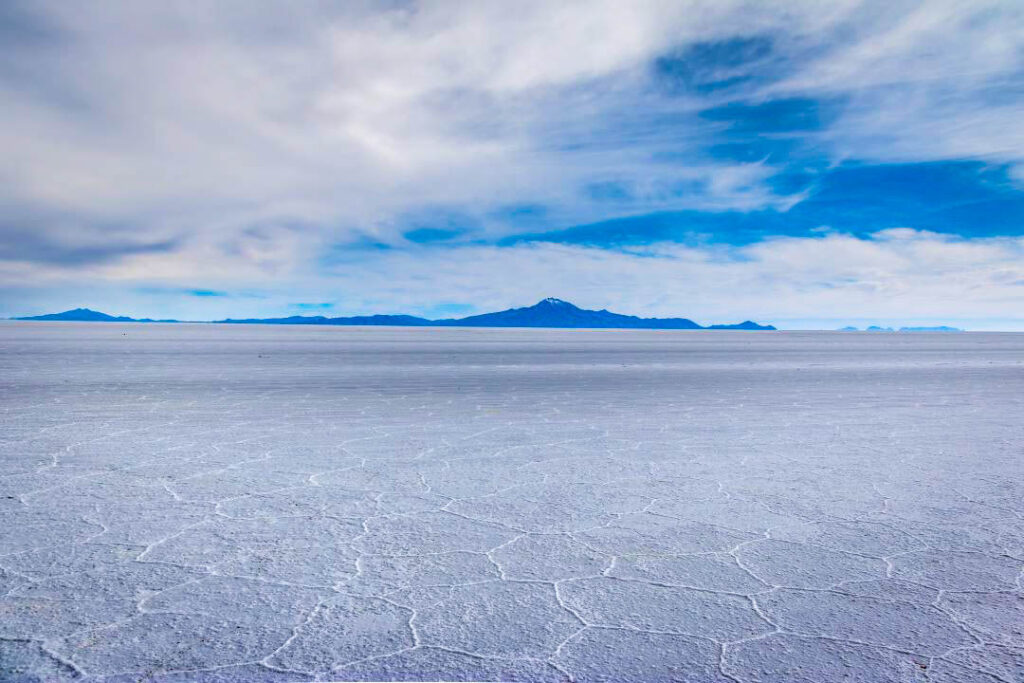
There are a variety of activities to enjoy in Salar de Uyuni, depending on your interests. One of the main attractions is taking a guided tour of the salt flats. These tours allow you to explore the vast white expanse, where you can take creative photos that play with perspective. The flatness of the area creates optical illusions, making it a perfect place for fun and surreal photography.
Beyond photography, many tours include visits to nearby natural wonders. You can explore the Tunupa Volcano, which offers breathtaking views of the salt flats from its slopes. Visiting the nearby lagoons, such as the Red Lagoon (Laguna Colorada), is another popular activity. These lagoons are home to flamingos and are known for their vibrant colors caused by mineral deposits.
Stargazing in Salar de Uyuni is also a memorable experience. The high altitude and clear skies make it an ideal location for viewing the stars, with the Milky Way clearly visible. Other activities include visiting the train cemetery near Uyuni, where old locomotives from the region’s mining history have been left to rust. Whether you’re interested in nature, photography, or history, there’s something for everyone at Salar de Uyuni.
Is Salar De Uyuni Worth Visiting?
Salar de Uyuni is absolutely worth visiting. It’s one of the most unique and surreal landscapes on Earth, offering experiences that you won’t find anywhere else. The sheer size of the salt flat, combined with its stunning beauty, makes it a must-see destination for travelers. Whether you’re walking on the endless white surface during the dry season or witnessing the mirror-like reflection during the rainy season, Salar de Uyuni is a place that leaves a lasting impression.
Visiting Salar de Uyuni is not just about seeing the salt flat; it’s about experiencing a unique combination of natural wonders. From colorful lagoons filled with flamingos to towering volcanoes and strange rock formations, the surrounding landscape adds to the allure of the area. The opportunity to take incredible photos that play with perspective and capture the beauty of this otherworldly environment is another reason why it’s worth the trip.
For adventurers, nature lovers, and photographers alike, Salar de Uyuni offers an unforgettable experience. It’s a destination that provides both peace and awe, making it a place that’s definitely worth visiting.
What is so Special About Salar De Uyuni?
Salar de Uyuni is special for many reasons, but its uniqueness begins with its sheer size and stunning visual impact. Covering more than 10,000 square kilometers, it’s the largest salt flat in the world. This vast expanse of white salt creates a landscape that feels like another planet. The perfectly flat surface stretches as far as the eye can see, creating a sense of infinite space.
What makes it even more special is the mirror effect that occurs during the rainy season. When a thin layer of water covers the salt, the flat becomes a giant mirror, reflecting the sky and creating the illusion of walking on clouds. This phenomenon attracts photographers and travelers from all over the world who want to capture the surreal beauty of this natural wonder.
In addition to its visual appeal, Salar de Uyuni is rich in minerals, including lithium, which is crucial for modern electronics. The combination of natural beauty, scientific importance, and economic value makes Salar de Uyuni a truly special place. Whether you’re interested in its stunning landscapes, its role in the global economy, or its unique wildlife, Salar de Uyuni is a destination unlike any other.
Conclusion
Salar de Uyuni in Bolivia is one of the most extraordinary natural wonders on Earth. Its vast salt flats, surreal landscapes, and unique experiences make it a must-visit destination for travelers. Whether you’re looking to explore the world’s largest salt flat, take breathtaking photos, or simply immerse yourself in the peaceful beauty of this remote location, Salar de Uyuni offers an adventure like no other.
From the mirror-like reflections during the rainy season to the endless white expanse of the dry season, Salar de Uyuni captivates visitors with its stunning visuals. Beyond its natural beauty, the surrounding area is rich in wildlife, geological wonders, and cultural history. Whether you spend one day or several, visiting Salar de Uyuni will leave you with memories that last a lifetime.
In conclusion, Salar de Uyuni is a place that everyone should experience at least once. Its uniqueness, combined with the incredible beauty and tranquility it offers, makes it a destination that stands out among the world’s most remarkable landscapes. Whether you’re seeking adventure, photography, or simply a moment of awe, Salar de Uyuni is a destination that delivers on all fronts.

